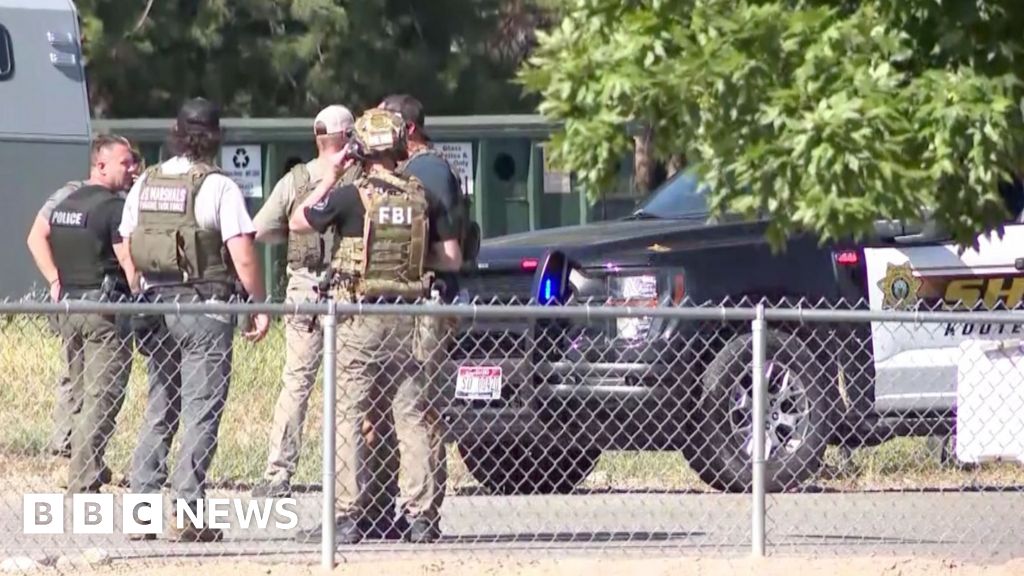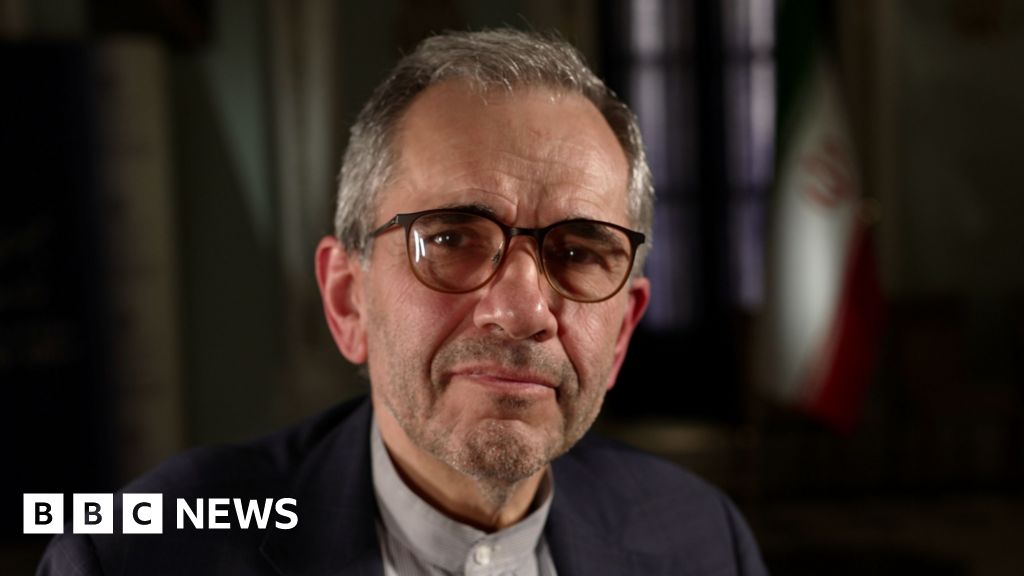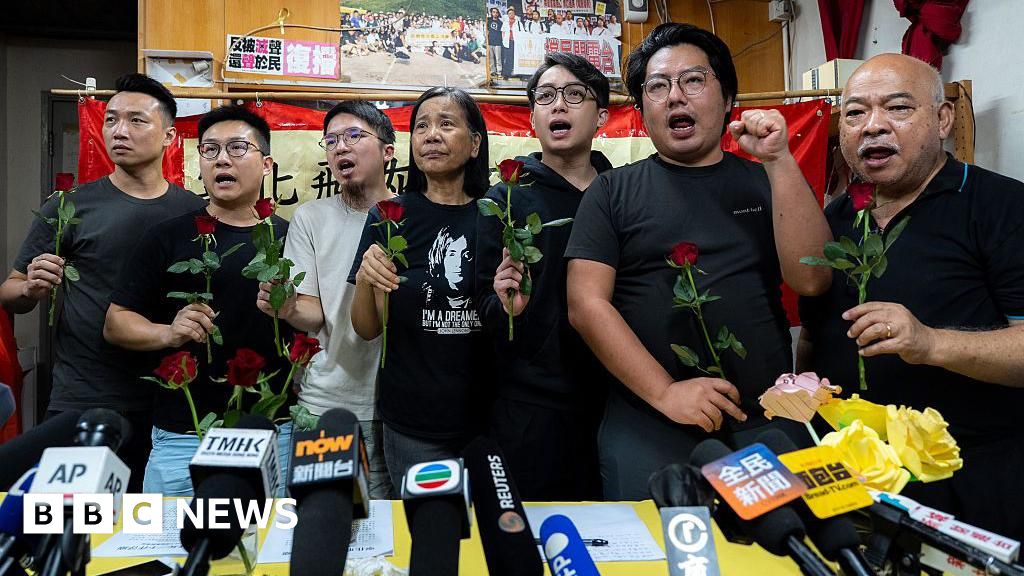We’re six weeks into the 2025 MLB season, long enough to gather some meaningful intel but short enough to wonder how much of it actually matters.
Pete Alonso has gone from unwanted free agent to MVP front-runner, only one team in the typically mighty American League East boasts a winning record, and some of the game’s best closers — Devin Williams, Alexis Díaz, Ryan Pressly and Emmanuel Clase, in particular — are suddenly not.
Those are just a few of the notable surprises through the first 23% or so of this season. Below are five others, and the reasons behind them.
Spencer Torkelson is suddenly hitting like a No. 1 pick
Spencer Torkelson was the Detroit Tigers’ No. 1 overall pick out of Arizona State University in 2020, billed as a can’t-miss bat. The 2024 season was supposed to be the stage for his breakout. Instead, he found himself back in the minor leagues.
Tigers manager A.J. Hinch texted Torkelson almost daily after the team sent him down to Triple-A last June. At one point, the two even met up for breakfast. Hinch wanted to assure Torkelson that the Tigers were thinking about him and still valued him. But what Torkelson might have needed most, some of those around him believe, was to see the team succeed without him. He needed the urgency to change.
“Coming out of college, I felt like I had it figured out, was the greatest hitter ever,” Torkelson said. “And I got humbled.”
Torkelson struggled so profoundly last year — a .669 OPS, 10 homers and 105 strikeouts in 92 games — that he entered 2025 without a clear path for playing time. Now, early in his age-25 season, he looks like the feared hitter so many expected to see. Through 36 games, Torkelson has already equaled last year’s home run total. He’s drawing walks at a significantly higher rate, OPS’ing .879 and ranking within the top 5% in expected slugging percentage — a stat he finished 211th among 252 hitters last year.
Torkelson entered this season with a 361-game sample of inconsistency, but scouts don’t see his sudden success as an early-season fluke — they see it as the result of an elite hitter making consequential adjustments.
Torkelson is more athletic and in rhythm in his stance this year, whereas previously he looked “statuesque,” in the words of one Tigers source. He has more bend in his knees, plants his feet closer together and has implemented a slight crouch. But it’s not really a change. It’s how he hit right up until the time he reached the majors.
“You watch any swing in my entire life,” Torkelson said, “I kinda look exactly the way I look right now.”
The taller stance Torkelson fell into at the big league level was what he described as “a Band-Aid.” The high fastball gave him trouble early on, so Torkelson did what felt obvious: make that high fastball seem less high.
“And it worked,” Torkelson said. “I got away with it. I hit 31 homers and I didn’t even feel that great.”
But those 31 home runs, accumulated in his second year in 2023, masked other deficiencies that showed up the following summer. Torkelson slashed just .205/.271/.337 through the end of May in 2024. Two days later, he was sent back to Triple-A for what became an 11-week stint. He returned in mid-August, produced a more respectable .781 OPS over his last 38 regular-season games, then went into the offseason vowing to hit the way he used to. He took a lesson from studying one of his favorite hitters, Mike Trout, who has built a Hall of Fame career despite struggling against the high fastball.
“We don’t get paid to hammer the high fastball,” Torkelson said. “We get paid to hammer the mistakes.”
The Tigers signed veteran second baseman Gleyber Torres to a one-year, $15 million deal in late December, then announced Colt Keith would move to first base. Torkelson came into spring training having to fight just to get at-bats at designated hitter. Then everything changed. Torkelson hit his way toward starting 31 of the Tigers’ 36 games at first base. His production — along with that of Javier Baez, who has produced an .827 OPS while transitioning to center field — has given the Tigers some much-needed right-handed power and helped them climb to the top of the AL Central.
“I’m seeing the ball better, and I feel dangerous at the plate,” Torkelson said. “As a hitter, that’s all you can ask for. You’re not going to hit 1.000. But when you’re feeling dangerous and you’re seeing the ball well, you feel like you can’t be beat. You’re going to get beat, but it gives you the best shot.”
The Angels’ lineup is trending toward the worst type of history
Last year, the lowly offenses of the Colorado Rockies and Chicago White Sox posted two of the 12 worst walk-to-strikeout ratios in major league history. Now the Los Angeles Angels, who entered 2025 with hopes of finally being competitive again, are making an early run at the all-time mark.
The Angels’ offense has accumulated 81 walks through its first 35 games this season, the lowest total in the majors. Their hitters have struck out 338 times, third most. Before tying their season high with six walks in a walk-off win on Wednesday night, their 0.23 walk-to-strikeout rate was on pace to be the worst in baseball history. It has since improved to a mere 0.24, tied with the 2019 White Sox for the lowest ever.
It’s probably not surprising to learn that the entire full-season bottom 10 has taken place over the last dozen years, at a time when hitters strike out more often than ever. It’s probably also not surprising to learn that seven of those 10 teams lost at least 100 games.
The Angels’ offense has been that bad. Since putting up 11 runs at the spring training facility where the Tampa Bay Rays play on April 10, they rank 29th in batting average, 27th in slugging percentage, and last in each of the following categories: on-base percentage, strikeout rate, walk rate and runs per game.
And though there’s still plenty of time to turn this around, it’s hard to envision how that historically low walk-to-strikeout rate — an important barometer of success on both sides — significantly improves. (Their pitching strikeout-to-walk rate, ranked 27th at 1.90, isn’t much better.)
On Tuesday, the Angels were happy to welcome back Yoan Moncada, who is capable of drawing walks but also strikes out at an exceedingly high rate. A return from Mike Trout, whose latest knee injury is not considered serious, would certainly help, though he reached base at only a .264 clip during his first 29 games. Taylor Ward, meanwhile, is much better than a .180/.225/.376 hitter.
But then there’s Jo Adell, whose career .639 OPS ranks 100th among the 114 players in Angels history with at least 1,000 plate appearances. And Logan O’Hoppe, who had the fifth-highest strikeout rate in the majors last year. And Jorge Soler, a prodigious power hitter who naturally carries a lot of swing-and-miss. And, notably, Kyren Paris, who looked like a breakout star early on but lately looks overmatched; since a two-hit game put his OPS at 1.514 on April 11, Paris has eight hits, three walks and 32 strikeouts in 66 plate appearances.
The Angels’ coaches have been trying to emphasize a two-strike approach with their hitters, but there’s only so much they can do.
“When you’ve got guys that’s capable of hitting the ball out the ballpark, it’s hard to tell them to cut their swing down because they don’t know what that is,” Angels manager Ron Washington said. “And when you’ve got guys in the lineup that don’t have a lot of experience and you say, ‘Cut the swing down,’ they don’t know what that is. There’s a lot of baseball to be gathered around here, man.”
Washington paused for a moment and smiled. Before being hired by the Angels in November of 2023, Washington spent seven years as the third-base coach and infield instructor on Atlanta Braves teams brimming with veteran, championship-caliber players. This Angels team is not that. They’re young and inexperienced, and Washington has to remind himself of that constantly.
He is a teacher at heart, and often that requires patience. His is being tested like never before.
The Brewers’ injury-riddled rotation has somehow found a way
Three Milwaukee Brewers starting pitchers — DL Hall, Tobias Myers and Aaron Ashby — landed on the injured list with soft-tissue injuries during spring training. Two more, Aaron Civale and Nestor Cortes, went on the shelf within the regular season’s first week. By that point, the list of starting pitchers on the IL stretched to seven. And yet, in the most Brewers way possible, their rotation followed with a miraculous run.
From April 6 to 22, the foursome of Freddy Peralta, Chad Patrick, Jose Quintana and Quinn Priester combined for a 1.55 ERA in 63⅔ innings. The Brewers began the season by allowing 47 runs in 33 innings, but since then their starting rotation boasts the fifth-lowest ERA in the majors at 3.08.
Peralta is a bona fide top-of-the-rotation starter, but Quintana is a 36-year-old who signed for a mere $4 million in March; Priester is a failed first-round pick acquired in a minor trade early last month; and Patrick is a 26-year-old rookie who wasn’t on anybody’s radar when the season began. But the Brewers have built a reputation for employing pitchers who overachieve. Because they can’t afford the high-ceiling arms who cost a fortune in free agency, they hammer their depth to raise their floor as much as possible. And to do so, they apply a simple concept: develop and acquire pitchers who fit their environment. More specifically, pitchers who benefit most from a strong infield defense.
Quintana, who can throw his sinker with more conviction with better defense behind him, posted a 1.14 ERA in his first four starts before allowing six runs to the Chicago Cubs on Saturday. Patrick, who boasts an elite cutter with two different shapes, has a 3.08 ERA in his first seven turns through the rotation. Priester, the 18th overall pick in 2019, had a 6.23 ERA in 99⅔ major league innings heading into 2025. But the Brewers were intrigued by a minor league track record in which he had roughly average strikeout and walk rates and kept more than half the batted balls against him on the ground. Priester maintained a 1.93 ERA through his first three starts before allowing 12 runs over his next 9⅓ innings.
That rough patch aside, Priester helped stabilize a Brewers rotation that was in dire straits when the season began. A key reinforcement could come by the end of this week, when Brandon Woodruff makes his long-awaited return from shoulder surgery. Woodruff has been fully healthy, pitching without restrictions, but his velocity has been down, his fastball sitting in the 92- to 94-mph range as opposed to the upper-90s heat he featured while pitching like an ace. When Woodruff returns, he might have to pitch differently.
The Brewers will probably figure it out.
The next hitting star on the Rays is actually … Jonathan Aranda?
The Tampa Bay Rays exceeded their international bonus pool in 2014, restricting them to signing players for no more than $300,000 over the next two years. And yet, leading up to the 2015 signing period, assistant general manager Carlos Rodríguez and then-international scouting supervisor Eddie Díaz traveled to Tijuana, Mexico, to watch a Cuban outfielder they could not afford: Randy Arozarena.
The trip proved to be beneficial years later, when the Rays acquired Arozarena from the St. Louis Cardinals and helped him become a star. But it was beneficial for another reason:
It helped them discover Aranda.
Rodríguez, at that time the director of Latin American scouting, asked Díaz to line up other prospects to see during the trip. Aranda was in that group and caught their eye. The Rays signed him for $130,000 in July of 2015. Ten years later, they’re watching him blossom.
Aranda, a 26-year-old left-handed hitter, ranks third with 182 weighted runs created plus this season, behind only Aaron Judge and Alonso. He’s slashing .317/.417/.554 with 14 extra-base hits. And so far, at least, he’s stealing the spotlight from Junior Caminero, widely hailed as the Rays’ next hitting phenom. It’s easy to be skeptical — Aranda’s .971 OPS is 279 points higher than his career mark in 110 games going into 2025 — but those who know him best are adamant that this is real.
Aranda has always been an elite hitter. The question was how the Rays would fit him onto their major league roster. He came up as a shortstop at around the same time Wander Franco surged through the system. By the time he was on the cusp of the major leagues, the likes of Yandy Diaz, Isaac Paredes, Brandon Lowe and Ji-man Choi occupied the other infield positions.
At one point, the Rays had Aranda try catching in hopes of getting his bat to the big leagues quicker. They felt he might have the arm and the hands for it. Aranda went back to Mexico and caught a handful of bullpen sessions but decided against it. He expressed confidence that his bat would eventually be enough to reach the majors.
It looked like it would in 2024. Aranda slashed .371/.421/.571 in 13 Grapefruit League games that spring and was primed to crack the Opening Day roster. But then he broke his right ring finger fielding a grounder, missed about five weeks and struggled for most of the ensuing season. It prompted a stint in winter ball where he made small mechanical tweaks that have helped him thrive in the early part of 2025.
But mostly, Rays officials believe, Aranda’s success stems from finally having a pathway for consistent playing time, largely as the stronger half of a DH platoon. His splits are quite drastic — 1.066 OPS against righties, three hits in 18 at-bats against lefties — but Aranda profiles as a 20-plus home run hitter who can rack up doubles and control the strike zone. It just took him a bit to get there.
Max Muncy suddenly can’t hit home runs
Max Muncy went 106 plate appearances before finally hitting his first home run of 2025 last Wednesday, on the final day of April. It marked the longest single-season homerless streak of his career, easily topping the 80-plate-appearance rut from 2022, according to ESPN Research.
His biggest issue was one that plagues many left-handed hitters who throw right-handed.
“He gets out on his front side pretty quickly,” Dodgers hitting coach Aaron Bates explained. “Part of the challenge for him is when he needs to start his leg kick and how to maintain balance as he’s striding forward. Because he throws with his right hand and hits lefty, the right side of his body kind of dominates his swing moving toward the pitcher, which is pretty common for a lot of guys. You look at Corey Seager, he’s pretty balanced. But a lot of times, when you have a lefty-righty-combo guy, they get kind of pulled that way. So that’s something that he has to constantly battle, and he has his whole career. When he’s synced up and he’s right, it’s great. And when he’s out of whack, he’s got to work to get it right.”
Muncy spent the better part of the first month working to sync up his timing, specifically when he drives his momentum forward. Few major league hitters stay on their back side through their entire load, Aaron Judge being a notable exception. But for most of this season, Muncy was getting to his front side too early, which resulted in fouling off hittable fastballs and struggling against breaking pitches.
“When you don’t trust yourself as a hitter, you don’t wanna get beat, and so you get off your backside sooner,” Bates said. “So it’s like the chicken or the egg.”
When Muncy settled into the batter’s box in the second inning on April 30, 305 players had homered in the major leagues in 2025. Muncy, with four 35-plus-homer seasons on his résumé, was not one of them. That day, he debuted prescription eyeglasses he had been testing out during pregame workouts to combat astigmatism in his right eye. The hope, Muncy told reporters, was that the glasses would make him less left-eye dominant.
But the biggest issue was a swing he had tweaked to produce low line drives instead of fly balls but wound up making him drift forward too early. Getting his weight shift back to normal proved to be a slow process. But to Bates, an encouraging sign arrived two days before Muncy’s first home run — when he stayed back on a sinker and dumped an opposite-field line drive into left-center.
Muncy has produced just the one home run — putting him in the same boat as Alec Bohm, Trea Turner and Xander Bogaerts, and one ahead of Joc Pederson, Tommy Pham and Gabriel Moreno — and still doesn’t seem fully in sync. But he’s carrying a slightly more respectable .708 OPS since the start of that game on April 28. He’s drawing walks, displaying some power, and at some point, Bates believes, the home runs will come in bunches.
“It can be any at-bat,” Bates said, “he’s homering.”
Source link


















